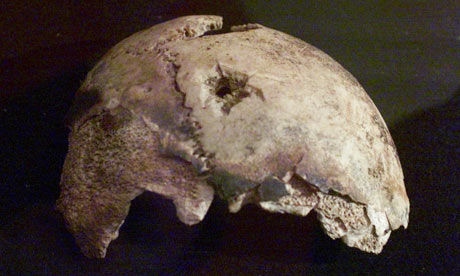
© Expatica.comReconstructing the face of the Neanderthal child.
Washington - Facing untold pressures to survive, Neanderthal kids grew up much faster than modern human tots, whose lengthy childhoods may be a relatively new phenomenon that has helped boost longevity.
That's according to a study by led researchers at Harvard University, the latest to highlight small but crucial differences in early development between humans and our closest cousins who became extinct about 28,000 years ago.
Researchers made the discovery after using a new "supermicroscrope" with an advanced X-ray technique to examine the teeth of previously discovered fossils of eight Neanderthal children.
"The Neanderthal children seemed to show a lot of stress," said lead study author Tanya Smith, assistant professor of human evolutionary biology at Harvard, noting that teeth can offer plenty of clues about overall development.
"Inside and outside, the Neanderthal teeth show a lot of these developmental defects in high frequencies. It seems like childhood was tough for Neanderthals."
The study, which appeared in the
Proceedings of the National Academy of Sciences, said that young Neanderthals' teeth growth "was significantly faster than in our own species."
Even when compared to some of the earliest human teeth, taken from remains of humans who left Africa 90,000 to 100,00 years ago, the differences were clear. Human teeth grew more slowly, pointing to more leisurely periods of youth.
"This indicates that the elongation of childhood has been a relatively recent development," the study said.


